Intel's Core Ultra 9 285H outperforms the Ryzen AI 9 365 in user review — Alchemist+ offers a nice bump in synthetics, but gaming performance remains similar to Meteor Lake
We expected better efficiency numbers.
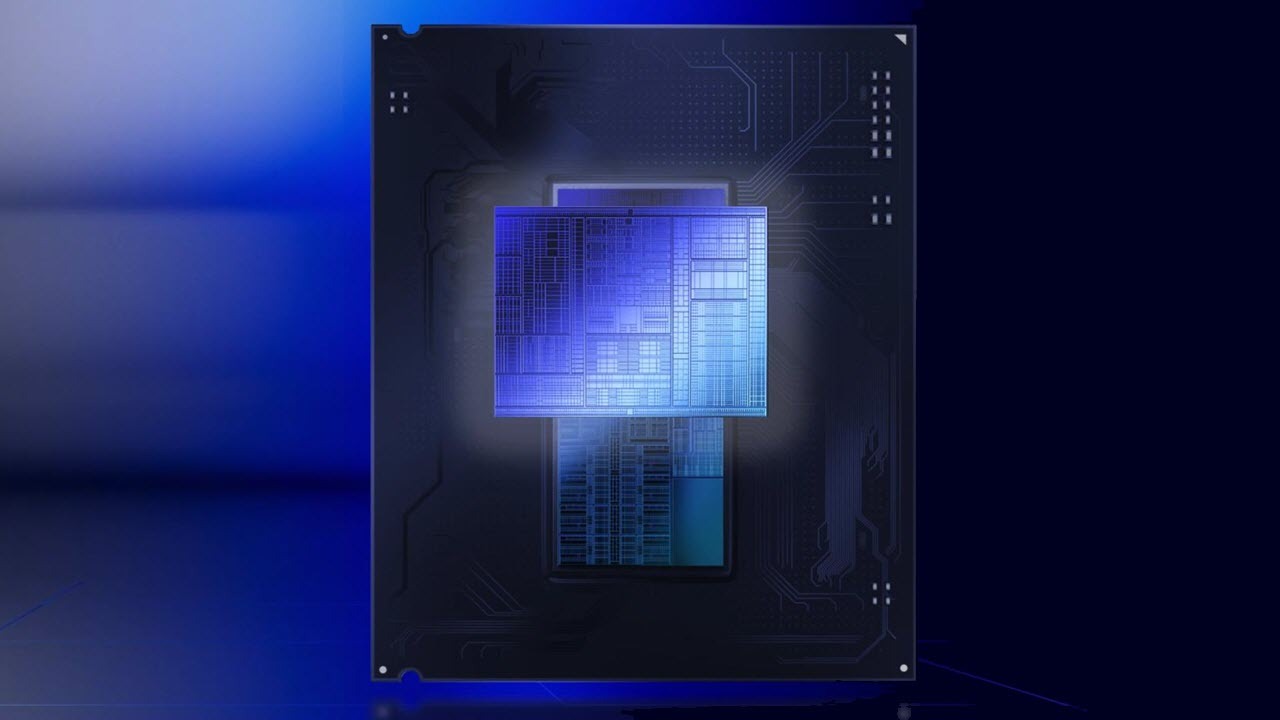
Intel's Arrow Lake-H has been put through its paces by hardware sleuth Golden Pig Upgrade Pack in his latest review at Bilibili. The tested models include the 16-core Core Ultra 9 285H and the 14-core Core Ultra 5 225H, though most of the spotlight is on the flagship variant.
Arrow Lake-H differs slightly from its desktop counterpart because it brings back LPE cores. Since Intel didn't offer much clarification, we aren't sure whether these cores are based on Skymont or Crestmont. In the latter case, Arrow Lake-H likely reuses the SoC Tile from Meteor Lake-H, but let's not jump to conclusions. The P and E cores employ the Lion Cove and Skymont architectures, respectively, cutting off Hyper-Threading.
The Core Ultra 9 285H offers 16 cores (six P-cores + eight E-cores + two LPE-cores) and 16 threads with a turbo clock of 5.4 GHz. The more mainstream-oriented 225H drops to 14 cores (four P-cores + eight E-cores + two LPE-cores), featuring a still-impressive 4.9 GHz turbo frequency. These processors have been compared against the Ryzen AI 9 365 packed with 10 cores (four Zen 5 + six Zen 5c) / 20 threads, and the high-end Ryzen AI 9 HX 370 leading the pack with 12 cores (four Zen 5 + eight Zen 5c) and 24 threads.
The shared images suggest this review was conducted on Lenovo's most recent IdeaPad series outfitted with Arrow Lake. Jumping into the benchmarks, the Core Ultra 9 285H surges ahead of the Cinebench R23 and R24 competition. In the single-core test, the 285H leads its predecessor by 13% with an impressive 26% uplift moving over to multi-core performance. However, all that glitters is not gold, and glancing at the efficiency slide doesn't paint a rosy picture for the 285H.
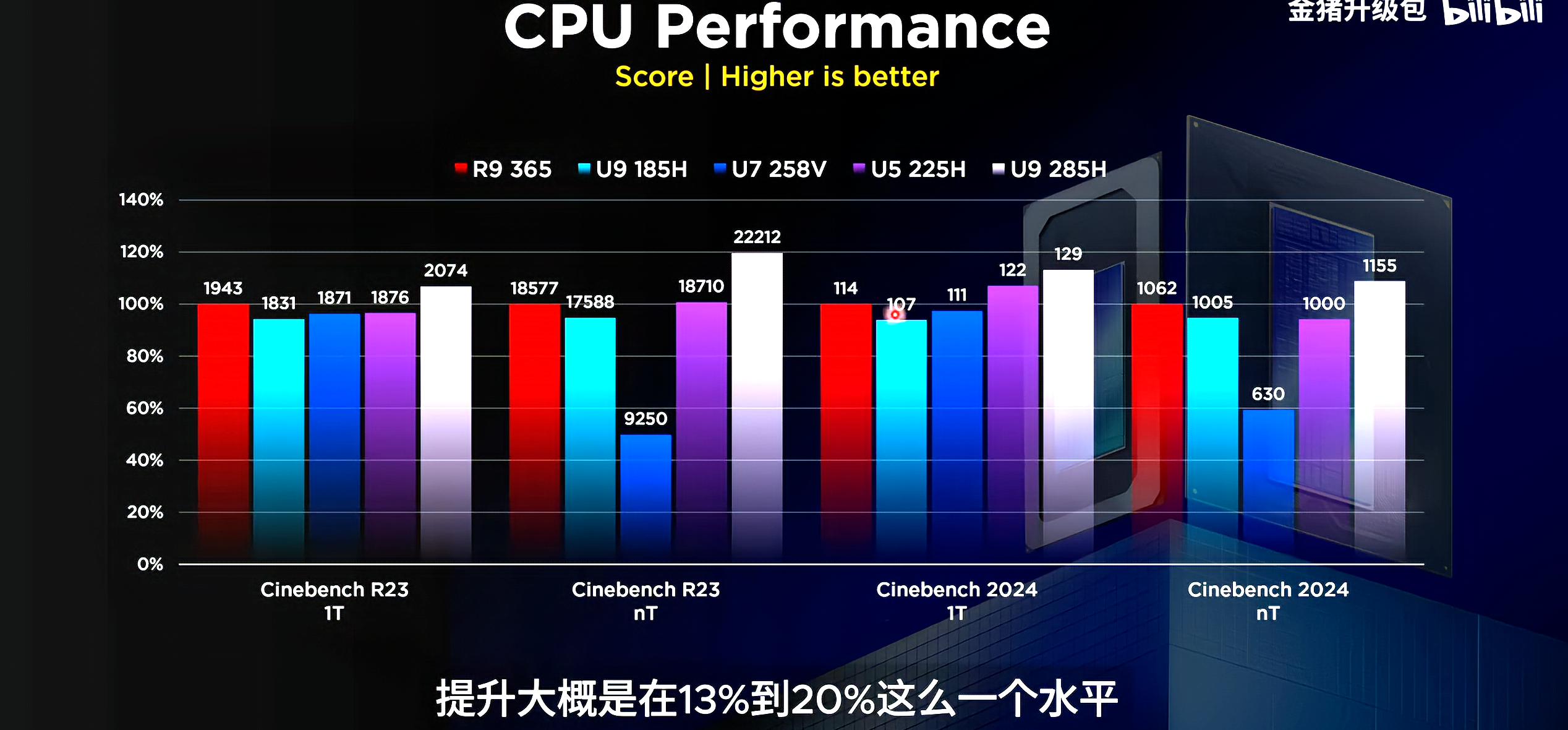
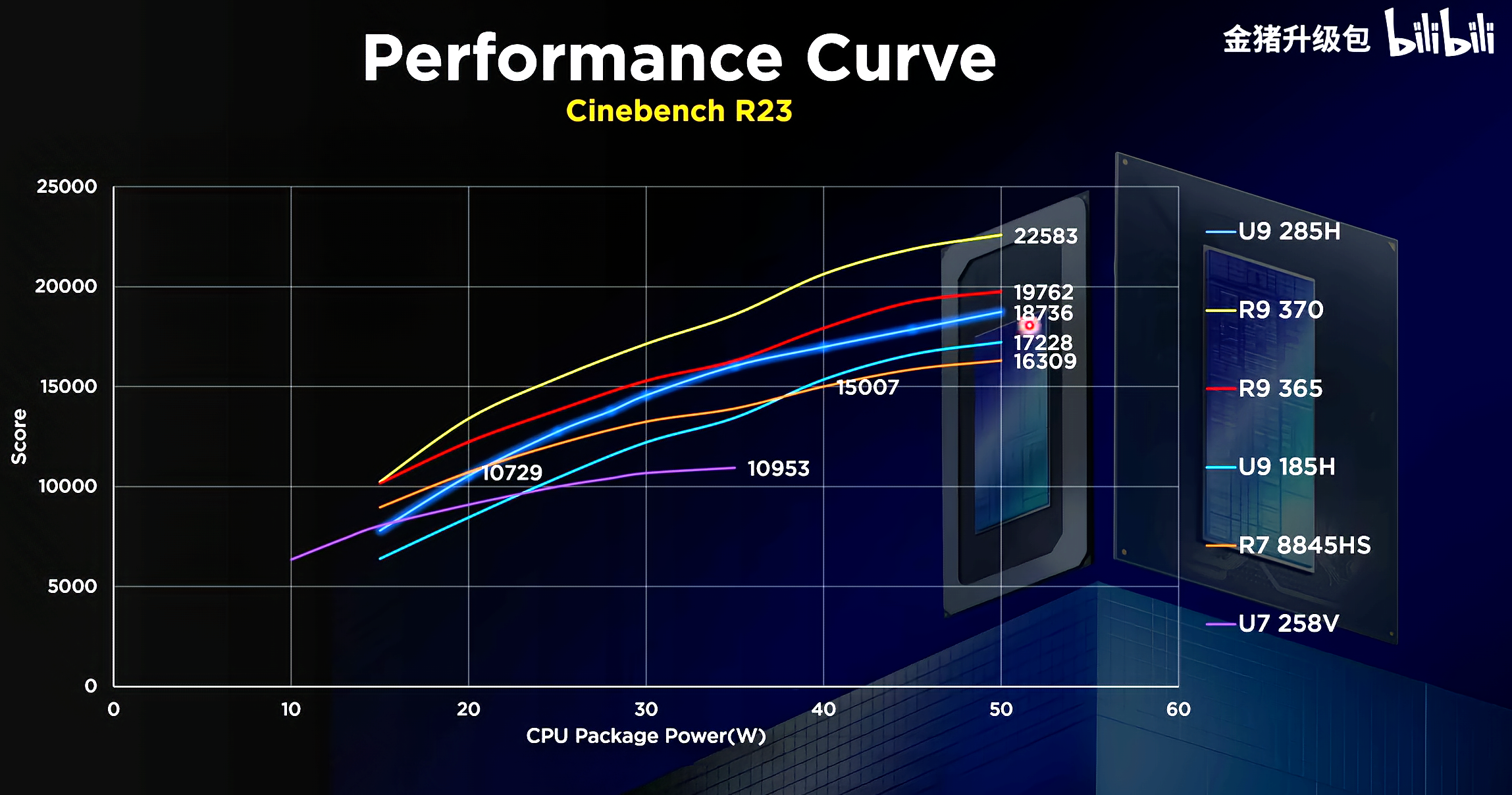
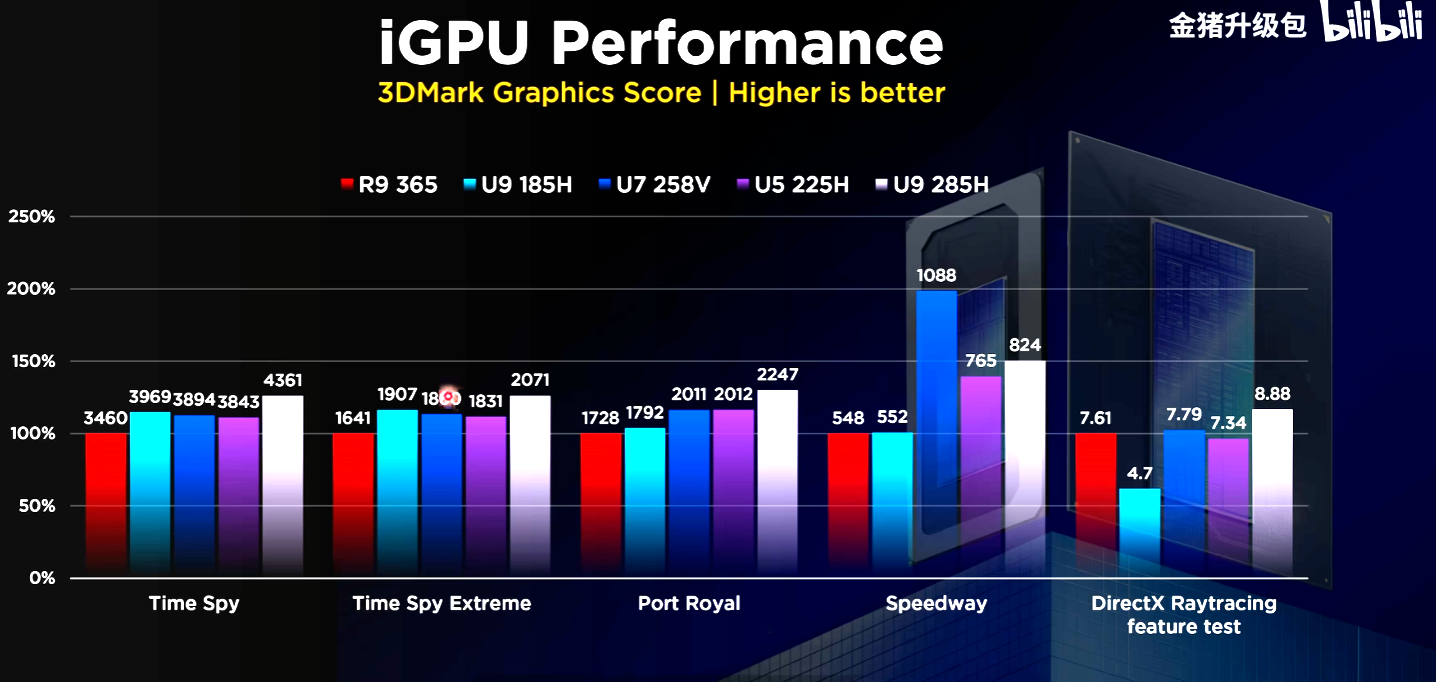
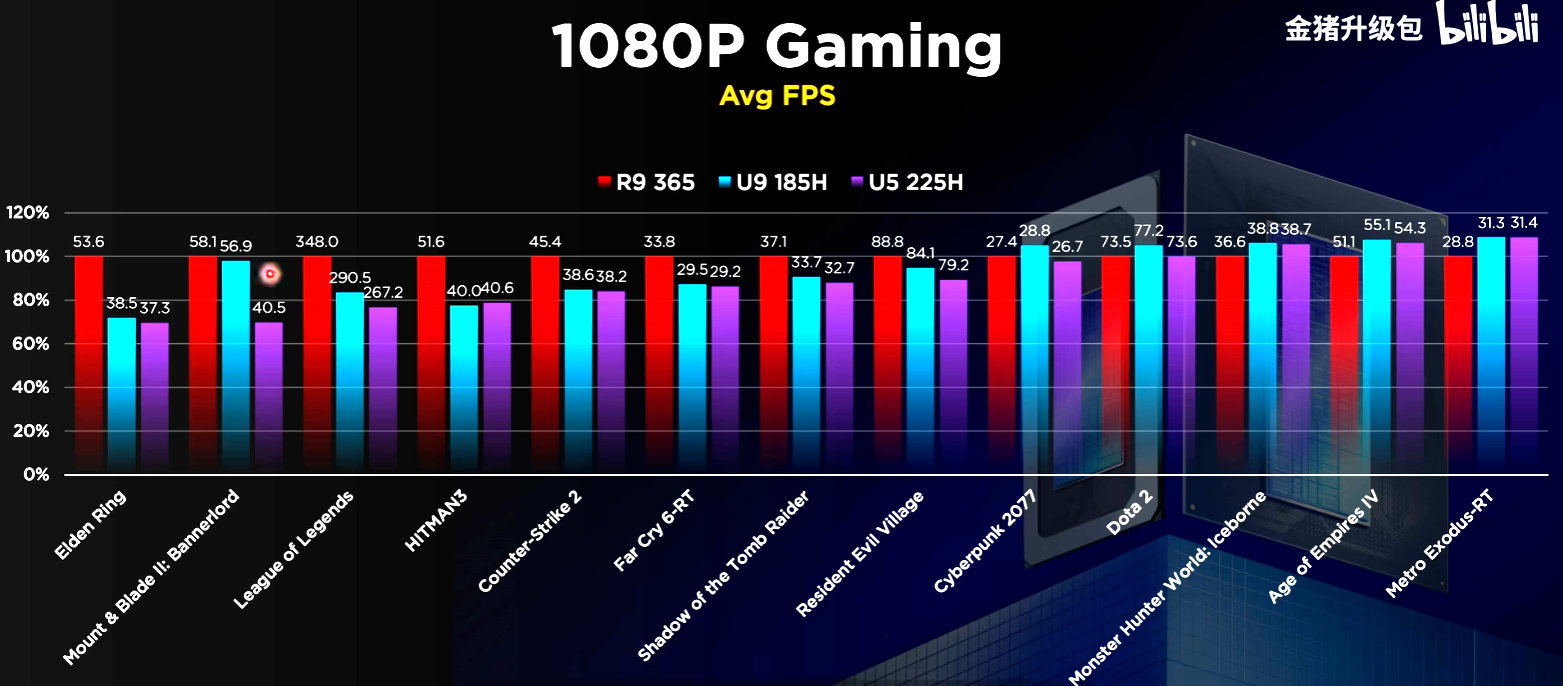
Limited to just 50W of power, Intel's Arrow Lake-H flagship fails to overtake the Ryzen AI 9 365 and considerably trails the Ryzen AI 9 HX 370. This is quite interesting as desktop Arrow Lake was much faster than Zen 5 in power-limited scenarios. The lackluster efficiency display could be attributed to the testing conditions or the supposedly older SoC Tile, but that's just a guess.
Arrow Lake-H's integrated GPU (iGPU) is based on a modified version of Alchemist with XMX cores. With that in mind, Intel has significantly improved 3DMark's testing suite. The most considerable uplift comes in ray tracing, where Arrow Lake leads Meteor Lake by almost 88%.
The same cannot be said for games where AMD's Radeon 880M is consistently ahead, and by some margin. Here, Alchemist+ yields little to no benefit over standard Alchemist. Funnily enough, Xe2 on Lunar Lake is the polar opposite as it struggles in synthetics but has managed to solidify its position as the fastest gaming iGPU, beating even the Radeon 890M.
Get Tom's Hardware's best news and in-depth reviews, straight to your inbox.
After the switch to a disaggregated design, Intel will probably be leveraging the same CPU Tile from the desktop for Arrow Lake-H on mobile. This was an interesting faceoff, but it raises several questions, especially regarding efficiency. Intel didn't specifically discuss Arrow Lake-H's architecture at its keynote, so we can only guess now.

Hassam Nasir is a die-hard hardware enthusiast with years of experience as a tech editor and writer, focusing on detailed CPU comparisons and general hardware news. When he’s not working, you’ll find him bending tubes for his ever-evolving custom water-loop gaming rig or benchmarking the latest CPUs and GPUs just for fun.
-
thestryker It's not particularly surprising that the performance is the same as MTL since the clock speed wasn't increased at all on the IGP. The only things which could really improve the performance there is if the system had higher speed memory or the IGP was getting a better share of the power. The biggest benefit is XMX being there which means higher quality upscaling which is fairly important at the lower resolutions expected at this level of performance.Reply -
gg83 I would love more info on the igpu. Why's it perform so poorly? Oh gosh, arrow lake/lunar lake all the lakes. Whys arrow igpu not so good but lunar lake is very good?Reply -
bit_user Once I saw the core counts of what they were testing, I'm not surprised.Reply
I do think this slide is worth a second look. Also, where was the Ryzen AI 9 370 in their bar graphs?
In general, Intel's newer CPUs are more competent at things like Cinebench MT than Raptor/Meteor Lake, due to the E-cores improving so much on floating-point performance. -
Jaack18 Reply
Lunar lake has a battlemage based gpu tile.gg83 said:I would love more info on the igpu. Why's it perform so poorly? Oh gosh, arrow lake/lunar lake all the lakes. Whys arrow igpu not so good but lunar lake is very good? -
Mama Changa Arrow Lake uses Xe not Xe2 in Lunar Lake. Some information it might be Xe+ but at best it's a tweaked Alchemist.Reply
If you want a good mobile apu from Intel wait until Panther Lake launches, this year. It will be massively better, getting Xe3, 18A, 10% IPC better memory controller location etc. -
bit_user Reply
For Thin & Light, yeah.Mama Changa said:If you want a good mobile apu from Intel wait until Panther Lake launches, this year. It will be massively better, getting Xe3, 18A, 10% IPC
For performance laptop, Ryzen 9 AI Max should fit the bill. I forget exactly when AMD said they would launch, but should be very soon.
In Arrow Lake, sure. Lunar Lake already puts it on the compute tile - can't do better than that!Mama Changa said:better memory controller location etc. -
OldAnalogWorld The irony of the igpu race is that the most powerful solutions are installed on the most powerful cpus (and therefore the most expensive), which will almost certainly have a second companion on the motherboard - a dgpu with a dedicated ultra-fast vram, and its maximum size. But in cheap processor models, which are most often installed in mass-market laptops, have weak igpus, although everything should be exactly the opposite - they should have a top igpu and top (in terms of bus bandwidth) RAM, since it is shared with other hardware and OS/software and, most importantly, since they do not have and will NOT have a companion in the form of a dgpu.Reply
Economically, this situation seems understandable, but in practice it is surreal - where the fastest igpu is needed, the slowest one is installed, and where it will never be used for tasks interesting to the public, since there is a dpgu - it wastes the transistor budget and the buyer's money..
I would cautiously even call it social equalization, but now Mr. Musk will come running, hehe...